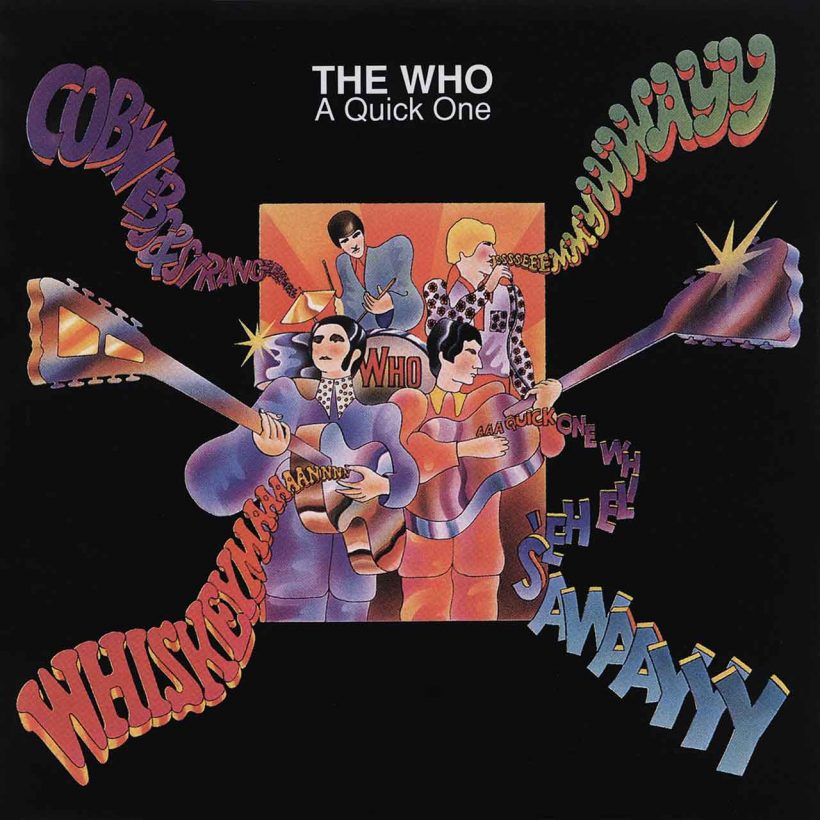‘A Quick One’: How The Who Took a Giant Step Forward
Wild experiments and sophisticated songcraft took The Who’s second album to a new level.

It’s almost hard to fathom the leap The Who took from their 1965 debut LP to their 1966 follow-up, A Quick One. The debut, My Generation, introduced a lot of Who hallmarks – Roger Daltrey’s beast-unleashed roar, Pete Townshend’s no-flash/all-mash supercharged guitar slash, John Entwistle’s tumbling-boulders basslines, and Keith Moon’s backbeat-be-damned polyrhythmic explosions. But even though that record ushered in a new rock era with milestones like the title track and “The Kids are Alright,” A Quick One makes it clear they were just getting warmed up.
The Who began as Mods, bending a knee to US R&B, which informed their first batch of songs in a big way. A Quick One saw those origins rapidly receding in the rear-view mirror. A version of Martha & The Vandellas’ “Heat Wave” that sends all the breakables in the room crashing to the floor is the only concession to The Who’s soul-shaker past. The rest of the album is defined by outrageous experiments and a new level of songwriting sophistication.
Order a new half-speed remaster of The Who’s A Quick One now.
Case in point: Did heavy metal, prog rock, and rock opera originate with A Quick One? Assigning such distinctions can be a slippery slope, but a damn convincing case can be made. For instance, the Entwistle-written/sung “Boris the Spider” bears an imposing, doomy riff, spooky subject, and on the chorus, even a proto-death metal vocal growl – it prefigures Black Sabbath by a good few years and adds a sense of humor to the bargain.
The outsized suite “A Quick One, While He’s Away” prognosticates both the arrival of progressive rock and The Who’s own subsequent run of full-blown rock operas like Tommy and Quadrophenia. Clocking in at an unprecedented-in-rock nine minutes, it shifts fearlessly between tempos, time signatures, and discrete segments, including a barbershop quartet-style a cappella opening, a two-step with a nursery-rhyme feel featuring “Ivor the engine driver,” a “Happy Trails”-esque Western theme, and more.
There’s a madcap, self-parodic vibe to the giddy careening, far from the seriousness of the progressive and rock-operatic sojourns the piece prefigures. That sense of humor finds its apotheosis in Moon’s other composition here, “Cobwebs and Strange,” an off-the-wall instrumental that Melody Maker called “Roland Kirk Meets The Munich Beer Hall Stompers.”
A Quick One was, among other things, a one-off experiment in spreading songwriting chores around the entire band. “I Need You” and “See My Way,” written by Moon and Daltrey, respectively, are among the very few Who compositions they’d contribute. But they made those moments count, somehow stepping up with tunes that stand tall alongside those of resident songwriting genius Townshend.
The record, especially, “A Quick One, While He’s Away” was not only a success but an inspiration. According to Mark Blake’s Pretend You’re in a War, Paul McCartney was impressed and told Pete Townshend that the song was “exactly the sort of thing The Beatles were working towards.” (Six months later, the Fab Four would release Sgt. Pepper’s Lonely Hearts Club Band.) Evolving into a new level of artistry without sacrificing the wild abandon of youthful glory is no snap. But The Who pulled it off with A Quick One, opening up new avenues for themselves and rock ‘n’ roll as a whole in the process.
Order a new half-speed remaster of The Who’s A Quick One now.













j
April 3, 2022 at 10:44 pm
was coming to comment on the greatness of the who in rnr circus
and there you are…doing it
great website you got here